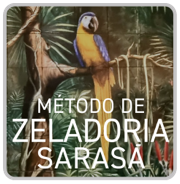Since 2022, Sarasá Institute, in partnership with Forte São Matheus, in the city of Cabo Frio, state of Rio de Janeiro, has been carrying out Zeladoria actions for cultural heritage.
Initially, theoretical and practical workshops open to the public were held. The first meeting, entitled: “Zeladoria do Patrimônio Cultural and Forte São Matheus: Preservation of the Symbolic and the Material”
, addressed Brazilian fortifications, their occupation, defense, constructions, systems, preservation, and uses; historical reflections on Forte São Matheus; the building in time/space and its meanings (architectural, memorial, material, symbolic); the cycle of materials — from natural to cultural, and from cultural to natural; understanding cultural heritage preservation policies; comprehension of the degradations affecting historical buildings; approaches of Zeladoria: affective and human aspects of preservation; lime in built cultural heritage — construction and preservation: what it is, its uses, and the handling of the material; historical characteristics and types of lime; by-products; transmission of knowledge; the human element; and the relationship with construction and the use of tools for working mortars; the human dimension in cultural processes; Zeladoria as perspective, practice, experience, and the future of heritage.
Em um segundo momento, de cunho prático, a abordagem “O zelo e a cal”, contemplou os seguintes conteúdos: cobertura, argamassas, pedras, madeiras, canhões e o entorno do Forte São Matheus: como olhar e preservar?; entendimento das sujidades, realização de limpeza seletiva, proteções; as práticas da Zeladoria do Patrimônio Cultural; o uso da cal: ciclo da cal, traços e consistência, a água, o leite e a pasta de cal; a aplicação de argamassas à base de cal – técnicas e funções; apresentação de ferramentas para trabalhar as argamassas; panos lisos, frisagens, ornatos – formas e elementos artísticos aplicados e integrados; trabalhabilidade da argamassa, tempos de preparo e cura; argamassas de acabamento e proteção; consolidação e restauração de argamassas à base de cal; caiação – preparação e aplicação, composições e funções; os pigmentos – história e tipos; intervenções cromáticas no patrimônio cultural.
De lá, com base nas instruções e disponibilização de cal virgem, as estruturas são zeladas e as imaterialidades perpetuadas no equipamento cultural.






